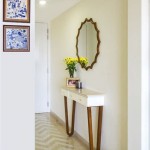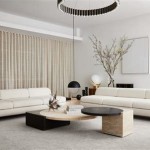How To Decorate A Bedroom With Only One Window
Decorating a bedroom with a single window presents unique challenges in maximizing natural light and creating a sense of spaciousness. Strategic placement of furniture, thoughtful color choices, and clever use of lighting can transform a potentially dim room into a bright and inviting sanctuary.
Maximizing Natural Light
Amplifying the impact of the single window is crucial. Avoid obstructing the window with bulky furniture. Opt for low-profile dressers and nightstands. Sheer curtains or blinds allow natural light to filter through while maintaining privacy. Avoid heavy drapes or dark-colored window treatments, as these can absorb light and make the room feel smaller.
Mirrors strategically placed across from the window can reflect natural light deeper into the room, creating the illusion of more light sources. A large mirror on a wall perpendicular to the window can effectively double the light's impact. Smaller, decorative mirrors can also contribute to a brighter ambiance.
Choosing the Right Color Palette
Light and airy colors are essential for enhancing brightness in a single-window bedroom. Walls painted in shades of white, cream, or pastel hues reflect light, making the room appear larger and brighter. Consider using a slightly lighter shade on the ceiling to further enhance this effect.
While light colors dominate the palette, incorporating accent colors can add personality and visual interest. These accents can be introduced through bedding, throw pillows, rugs, artwork, and decorative accessories. Balancing light wall colors with bolder accent colors prevents a washed-out look.
Strategic Furniture Placement
The placement of furniture significantly impacts the flow of light and the perceived spaciousness of the room. Positioning the bed so it doesn't directly block the window allows light to reach deeper into the room. If space permits, placing the bed diagonally opposite the window can be an effective strategy.
Keeping furniture away from the window area allows light to circulate freely. Avoid overcrowding the room with unnecessary furniture pieces. Choose multi-functional furniture, such as a storage ottoman or a bed frame with built-in drawers, to maximize space and minimize clutter.
Layering Lighting
A layered lighting scheme is essential for compensating for the limited natural light. Ambient lighting provides overall illumination, while task lighting focuses on specific areas for activities like reading or working. Accent lighting highlights decorative elements and adds depth to the room.
A central ceiling fixture provides ambient lighting. Table lamps on nightstands offer task lighting for bedside reading. Floor lamps placed strategically in corners can brighten darker areas. Wall sconces flanking the bed or a decorative chandelier can add a touch of elegance and enhance the overall lighting scheme.
Creating an Illusion of Space
Several design techniques can create the illusion of a larger, more open space. Vertical stripes on curtains or wallpaper can draw the eye upwards, making the ceiling appear higher. Hanging curtains higher than the window frame also contributes to this effect.
Minimalist decor emphasizes clean lines and avoids clutter, which can make a room feel cramped. Choosing furniture with legs rather than bulky pieces resting directly on the floor can also contribute to a sense of airiness and spaciousness.
Incorporating Reflective Surfaces
Beyond mirrors, other reflective surfaces can amplify light and create a sense of depth. Glass-topped furniture, such as coffee tables or nightstands, allows light to pass through, preventing visual heaviness. Metallic accents in lamps, picture frames, or decorative accessories can also contribute to a brighter, more spacious feel.
High-gloss paint finishes on furniture or trim can reflect light and add a touch of sophistication. However, it's important to use high-gloss finishes sparingly to avoid an overly shiny or reflective look. Balancing these surfaces with matte finishes creates a harmonious and visually appealing space.
Utilizing Plants
Introducing greenery can enhance the sense of life and vibrancy in a single-window bedroom. Plants not only add a touch of nature but also improve air quality. Positioning plants near the window allows them to thrive while adding to the overall aesthetic of the room.
Choose plants that tolerate low-light conditions if the window doesn't provide abundant sunlight. Consider hanging plants from the ceiling or placing them on shelves to maximize floor space and create visual interest. The addition of greenery contributes to a calming and inviting atmosphere.

7 Tips For Placing A Bed In Front Of Window

Cozy Retreats Window Seat Design Home

Give A Bedroom Makeover With Light And Bright Spa Feel Jennifer Rizzo

Are You Looking For Small Bedroom Design Guest Decor

7 Tips For Placing A Bed In Front Of Window

How To Design Tips For A Bedroom With Off Center Windows Something Lovely

How To Hide An Off Center Window Behind Bed Practical Ideas

Bedroom Window Seat Built Ins Ideas Honeybear Lane

85 Bedroom Ideas How To Decorate A Stunning

Real Simple Home Decor Ideas Recipes Diy Beauty Tips Bedroom Design
Related Posts







